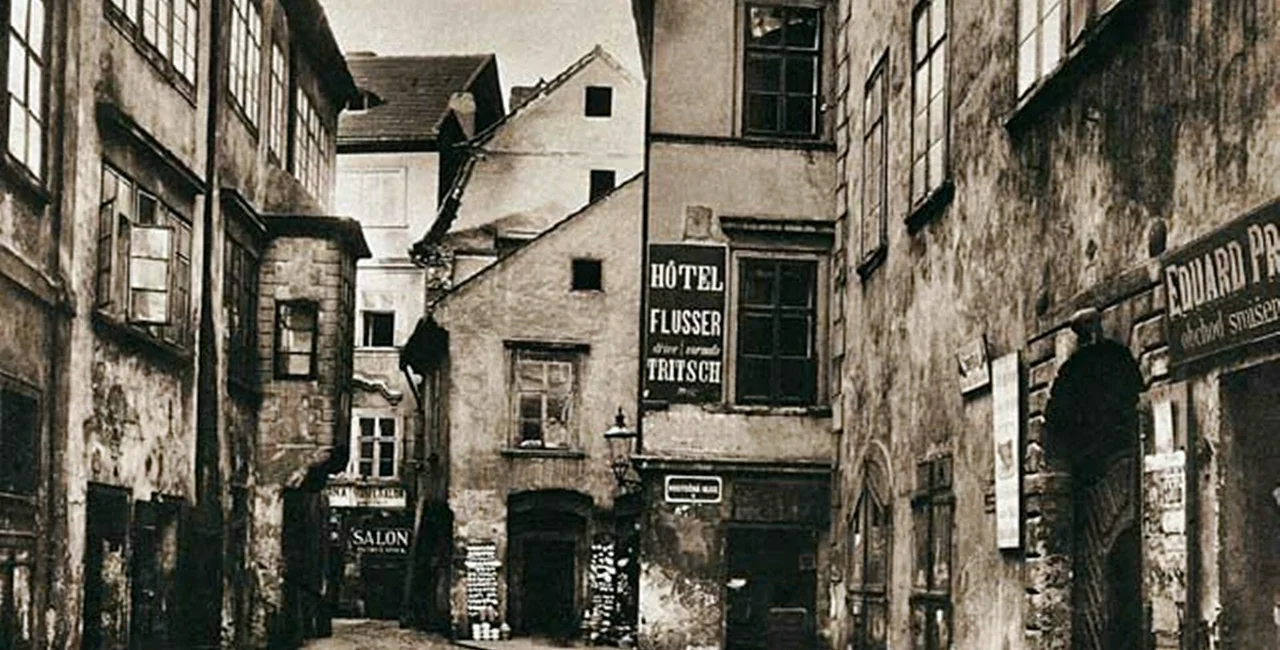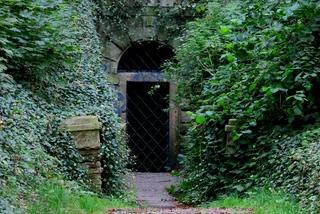Prague’s Josefov is currently its most upscale district, filled with Art Nouveau apartment buildings and luxury boutiques. Its central boulevard Pařížská Street is dotted with luxury brands and boasts the highest commercial rents in the country.
But that wasn’t always the case. Today's glitzy neighborhood is founded on a controversial law that took effect some 130 years ago this week when the century-long gentrification of Josefov began.
PARTNER ARTICLE
At the time, the quarter was overcrowded, with poor sanitation leading to frequent outbreaks of illness. Prague’s leadership, in favor of modernizing the maze of medieval streets to bring the city into the 20th century, aimed to clear the Jewish ghetto along the Vltava river and as far inland as Old Town Square, a targeted area of over 600 houses with a total area of about 380,000 square meters.
The controversial ghetto clearance law, known as the Prague Redevelopment (Pražská asanace) was approved by Austrian Emperor Franz Josef on Feb. 11, 1893.

Centuries of Jewish history
The Josefov ghetto came into existence as a result of centuries-old laws across Bohemia as well as most of Europe that restricted where Jews could live. In Prague, Jewish communities settled in this particular section of Old Town as early as the year 1096. In 1357, Emperor Charles IV granted Jews in Josefov the right to their own flag and coat of arms.
Emperor Joseph II extended the rights of Jewish people as part of his religious reforms in the early 1780s, and the quarter was later named Josefov in his honor.
During the reign of Emperor Rudolf II in the late 16th and early 17th centuries, the neighborhood became associated with Rabbi Loew and the legend of the Prague Golem, a clay creature brought to life to defend the ghetto from anti-Semitic attacks.
A dodgy maze with a bad reputation
By 1850, the law restricting where Jewish people could live was finally canceled. At that point, the ghetto, with its small area and growing population, had become a congested maze of narrow alleys and ramshackle buildings. It then became Prague’s fifth district – joining Old Town, Malá Strana, Hradčany, and New Town, which had come together to form Prague on Feb. 12, 1784.

The end of the restrictions, though, led to a worsening of conditions in the ghetto. Many Jews moved into better and more modern neighborhoods, and the ghetto – still densely filled with substandard housing – became home to Prague’s seedier elements with a reputation for crime, especially at night.
Plans to alter the area began to take shape in the 1880s and originally called not only for Josefov to be cleared of its old buildings but also most of Old Town and New Town. Thankfully, these plans proved unfeasible, as doing so would have destroyed most of the city’s historical center.
The plan that was finally approved mainly covered the former ghetto and a small surrounding area. The property issues were resolved by the Feb. 11, 1893, law, which gave the city the right to demolish the buildings in the area regardless of ownership.
Demolition began in 1895 and took place throughout 1896 with many living in the area displaced. Due to end by 1903, the project was extended a few times.
Many of the upscale buildings that can now be seen in Josefov date to the early 1900s, when Art Nouveau was in vogue. Colorful tile work, elaborate sculptural details, and stained glass can be spotted on many of the apartment buildings.
Pařížská Street was named after Paris. The long, wide, and straight street was created on the site of several narrow alleys and demolished ghetto buildings. At first, it was called Mikulášská třída, after the church at its head, but it took on its fancier name in 1926 when it started to become associated with imported fashion. The idea of the long street was inspired by Paris's Champs-Élysées.
Birth of Prague's preservation movement
Plans to further destroy buildings in Prague's historic center began to face increasing protests from writers, historians, architects, and the general public. Moravian writer and critic Vilém Mrštík wrote two manifestos against the destruction of Prague’s heritage.
Architects Antonín Wiehl and Jan Zeyer, whose neo-Renaissance buildings can be seen across Prague, became active in creating a commission to catalog and document historical buildings for preservation purposes.
Protests to stop the spread of the destruction beyond what had already happened in Josefov led to the creation of the Club for Old Prague (Klub Za starou Prahu) in 1900. The group is still active in trying to preserve Prague’s landmarks, and currently involved in efforts to save the historical railway bridge between Výtoň and Smíchov.
While several historical buildings were destroyed in Josefov, many of the most important Jewish sights were saved, including the Old Jewish Cemetery, six synagogues, and Jewish Town Hall with its distinctive clock.

Grand plans that were never realized, in part due to protests and objections, included extending Pařížská Street across the Vltava and through what is now Letná park, and creating a massive gateway and colonnade. Plans to tear down parts of New Town in the Podskalí area were also scaled back.
New construction and renovations that continue in Josefov still spark controversy. Plans to create a glass-covered mall on a plaza on Pařížská Street and the extensive renovation of the Golden Prague Hotel (formerly the Intercontinental Hotel) were both met with unsuccessful protests. On the other hand, the renovation of the long-neglected office and shopping center at Pařížská 25 has been going smoothly.
Visitors today will find international luxury brands, Art Nouveau architecture, and Jewish landmarks mingling along Pařížská Street and the surrounding lanes, verifying the quarter's lengthy history of gentrification and the enduring legacy of its original inhabitants.












 Reading time: 4 minutes
Reading time: 4 minutes 





































